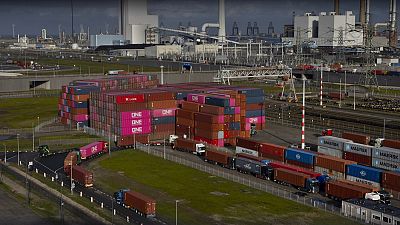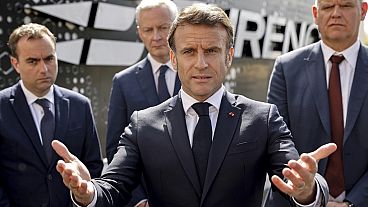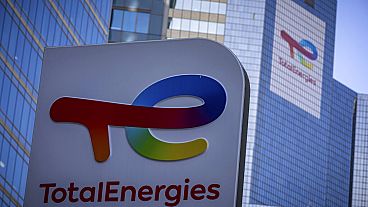Activity grew by 0.3% between April and June, while prices rose by 5.3% in July.
Europe’s economy has grown modestly after months of stagnation. During the second quarter of 2023, between April and June, the euro currency countries saw 0.3% growth, as the EU statistics agency Eurostat reported Monday.
Although it’s a slight gain compared to the first quarter when there was zero growth, it is still not growing at the pace it did before the energy crisis and Russia's full-scale invasion of Ukraine.
The forecasts of the last few months have been anticipating an improvement in the economy, suggesting the European economy would pick up a little more speed in the spring.
Numbers are in line with the European Central Bank’s (ECB) June estimate.
Uncertainty about ECB’s estimates dissipated in the last few days as national statistics institutes of the four large economies in the euro area were published.
Spain grew by 0.4%; France, by 0.5%; Germany came out of recession absolutely stagnant (0%) and only Italy fell back somewhat, -0.3%.
The two biggest drivers were France and Spain. The French figure was increased by the delivery of one very large manufactured item: a cruise ship. That statistical quirk flattered French growth but did little to disguise weak demand for goods in the eurozone’s second-largest economy.
Ireland's growth of 3.3%, largest in the eurozone, also distorted the overall picture.
The Emerald Isle's growth figures often show large swings due to major international companies housing their headquarters there, including tech giants like Meta, Google and Apple.
Without Ireland, euro-area growth would have been only 0.1%, said Franziska Palmas, senior Europe economist at Capital Economics, to AP.
Inflation still at high levels
Inflation in the eurozone, meanwhile, continued its gradual decline, falling to 5.3% in July from 5.5% in June. Numbers which are still far from the 2% target set by the European Central Bank (ECB).
The ECB has not yet decided whether it will continue to raise interest rates.
Christine Lagarde, president of the institution stated in the French newspaper Le Figaro that "in September there may be another interest rate hike or, perhaps, a pause".
Although the tool is used to fight inflation it makes it more expensive for households and businesses to borrow, invest and spend.
Europe is still struggling with the aftershocks of Russia’s invasion of Ukraine, including Moscow cutting off most of its natural gas to the continent that sharply raised prices for the fuel and the electricity it generates.
The worst of the price spike is over, but costs are still higher than before the war began. Energy has faded as a main driver of inflation, but price rises are hitting Europeans when they shop for groceries, clothes and more.
Food prices rose 10.8% in July from a year earlier, an improvement from June and previous months but still a burden for European households.
Energy, meanwhile, kept dropping, falling 6.1%. Stripping out volatile food and energy prices, core inflation held steady at 5.5% — a key indicator that has not fallen as much as central bankers want.
However, the second half of the year may bring dark clouds to the eurozone. According to the latest studies, Germany is taking its time to take off and leading indicators - many of them surveys - point to a weakening.



